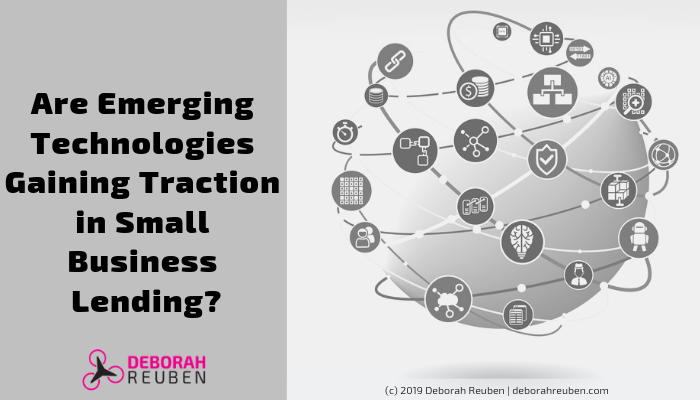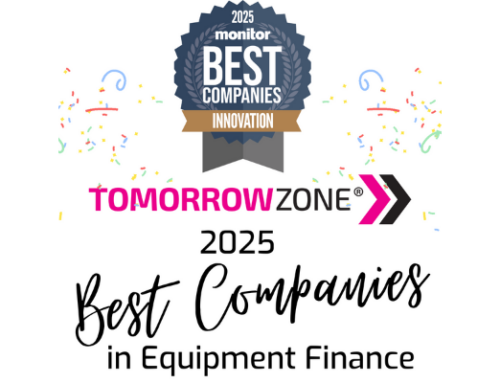
Last summer, I was invited as a speaker to introduce the basics of blockchain technology at the Small Business Lending Forum, hosted by Orion First Financial.
As a first-time attendee, I found it interesting to see the finance industry through a new lens: with a focus on small business lending. The rapid pace of technology changes affect most businesses – regardless of size. We all strive to find new ways to work faster and improve our clients’ experiences. With the potential applications of many emerging technologies such artificial intelligence, automation, predictive data analytics, and more, the possibilities for innovative new customer experiences, process enhancements, and financial product offerings are multiplying.
Throughout the event, technology advances and the future of finance was a common theme. From session presentations to hallway conversations, we explored a variety of technologies expected to impact small business lending for the future, such as: cloud platforms, artificial intelligence, internet of things (IoT) and blockchain. As a rapidly advancing technology, blockchain is expected to enable disruptive change in most industries, with a protocol that brings strong potential to enhance small business lending in the future.
During one breakout session, we presented a basic introduction to blockchain; helping the audience to understand the technology with an example of how it’s applied in small business lending today.
What is blockchain?
In short, blockchain is the infrastructure/technology underlying a variety of decentralized applications, like Bitcoin (a cryptocurrency).
As a fundamental infrastructure, blockchain will enable new types of decentralized applications (Dapps). As a simple analogy, think of blockchain as an infrastructure component, similar to the plumbing in your house. Until you have an interface, such as a faucet, you can’t quite glean the benefits of plumbing. Conceptually, blockchain is a foundational technology component – a fundamental technology that makes other things possible.
If you are learning about this technology for the first time, be patient, it may take several exposures to the technology before you start to understand the possibilities and applications for the future of your business. Although it’s helpful to understand the basics of this technology and how it works, for business leaders, it’s more important to understand the business model and process innovation blockchain makes possible for the future.
Why does blockchain matter for small business lending and what are some of the possibilities it brings for the future?
While the technology is still evolving, there are some compelling benefits to leveraging blockchain for business model innovation. For example:
Given that blockchain is a decentralized database consisting of a series of interlinked, cryptographically secured blocks of transactions, we gain:
- Transactional Efficiency: through decentralization, transferring value over a blockchain network can reduce or remove dependency on intermediaries, decreasing both transaction time and cost.
- Transparency: in a blockchain network, we can see who wrote a transaction. Each record has a cryptographic key linking the transactions in a chain. Once transactions are validated and written to the ledger, the cannot be changed. An attempt to change or hide a transaction would require updating every other block in the chain.
- Immutability: in a blockchain, data is append-only and cannot be manipulated. Because the blockchain creates a dependency from one record to another by chaining them together, the records are tamper-evident.
- Smart-contracts: blockchain enabled smart-contracts are business rules enforceable by programmatic code. For example, a smart contract could be set up to enforce payment when specific conditions are met.
What is an example of blockchain in small business lending today?
One example of blockchain in small business lending is FinTrux, a Singapore-based company granting small business loans on the blockchain. In our breakout session, co-panelist Conrad Lin, Co-Founder & CMO of Fintrux, shared the vision of Fintrux’s new lending platform. The platform is powered by smart-contracts, to innovate and streamline the process of granting loans to small business owners.
What are some perceived barriers to blockchain adoption?
A continuing query in the commercial finance realm asks what the barriers are to blockchain adoption. The answers for small business lending are consistent with what I am seeing in the Equipment Finance space, as well as other industries.
- Education and Awareness. Many leaders and teams lack understanding of the technology and the business model innovations it enables.
- Ability to identify viable use cases. Since blockchain is not the answer for every type of business problem, a big challenge is helping people to clearly understand how to identify when it makes sense to apply blockchain instead of (or in conjunction with) other technology approaches to solving business problems.
- Thinking Long-Term: Long-term thinking is required when considering blockchain application. The technology is still evolving and widespread mainstream adoption is likely to take several years. For leaders who are pressured to meet today’s numbers and plan in one to two-year cycles, this can be a significant shift in mindset.
- State of Digitization: If your processes are still paper-based, digitization is an important consideration, since leveraging advanced technology such as blockchain requires a digital foundation.
- User Experience: The key to wider adoption of blockchain will be the user experience and the user interface. We are still early in this technology’s evolution and we are not likely to see mass adoption until we see clear use cases that solve real problems, as well as natural user interfaces that make it easy for users to interact with the technology.
Although these concepts may seem far off and futuristic, we should remain aware of their potential today. Through a variety of pilots and proof of concept projects across multiple industries, blockchain has proven to be a legitimate and viable technology tool that should be part of forward-thinking technology landscape discussions.
What do you need to know right now?
For non-technical business people, it isn’t necessary to understand the minutiae of the blockchain technology and how it works. More critical, is realizing what technology makes possible and how blockchain can be applied to change the way we do business in the future. Learn the basics and potential benefits of blockchain. Separate hype from reality, realizing that it may be a while before there is a viable mainstream adoption of blockchain-based applications. There is a lot of development underway, but it may take a while for these distributed apps to gain mainstream adoption.
Many experiments and early beta programs are working to bring blockchain capabilities to small business lending. However, it may be a while before there is massively transformative mainstream adoption of the blockchain enabled apps. For now, it is good to be aware of the technology and its potential: watching the technology continue to evolve.





